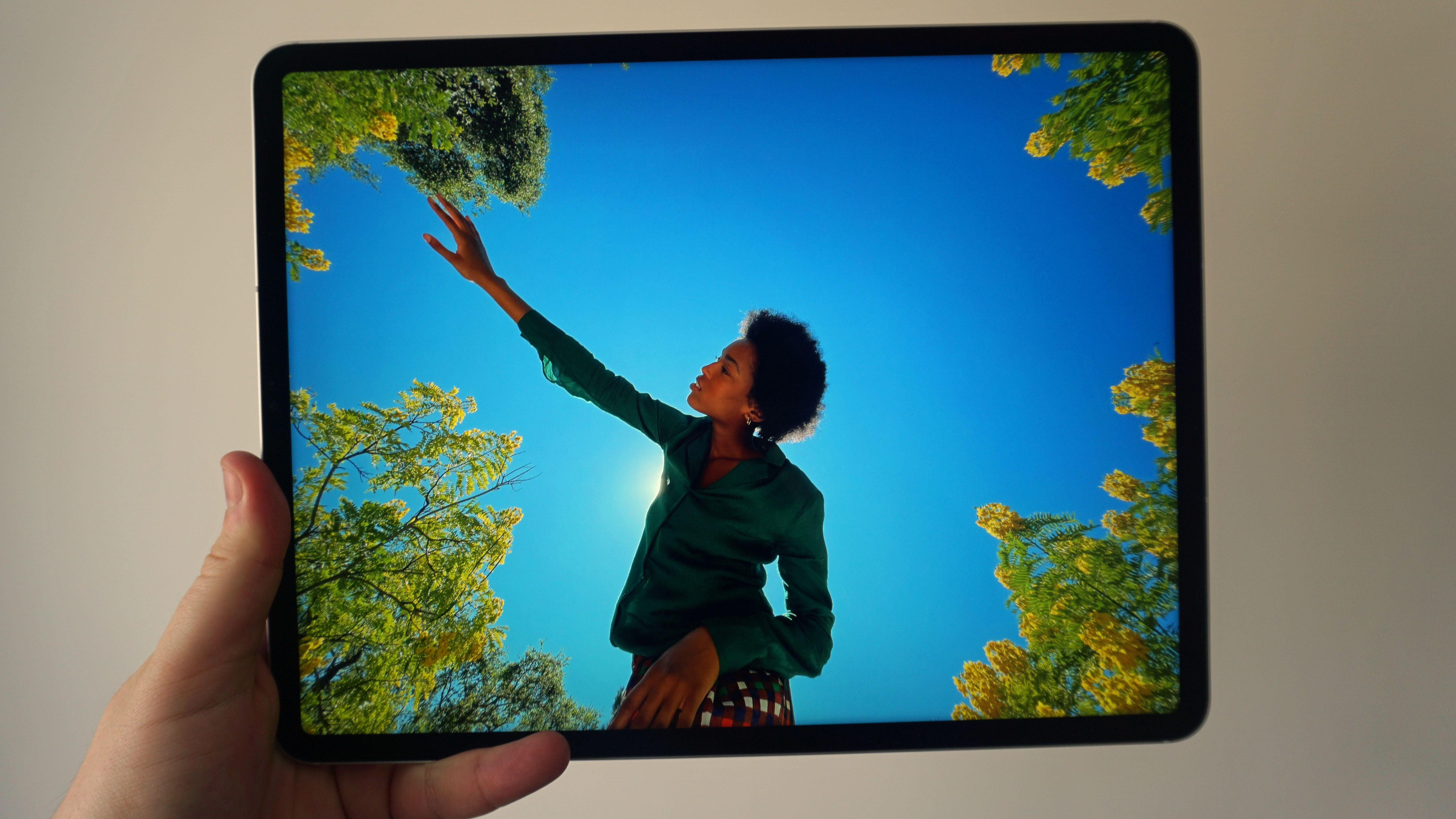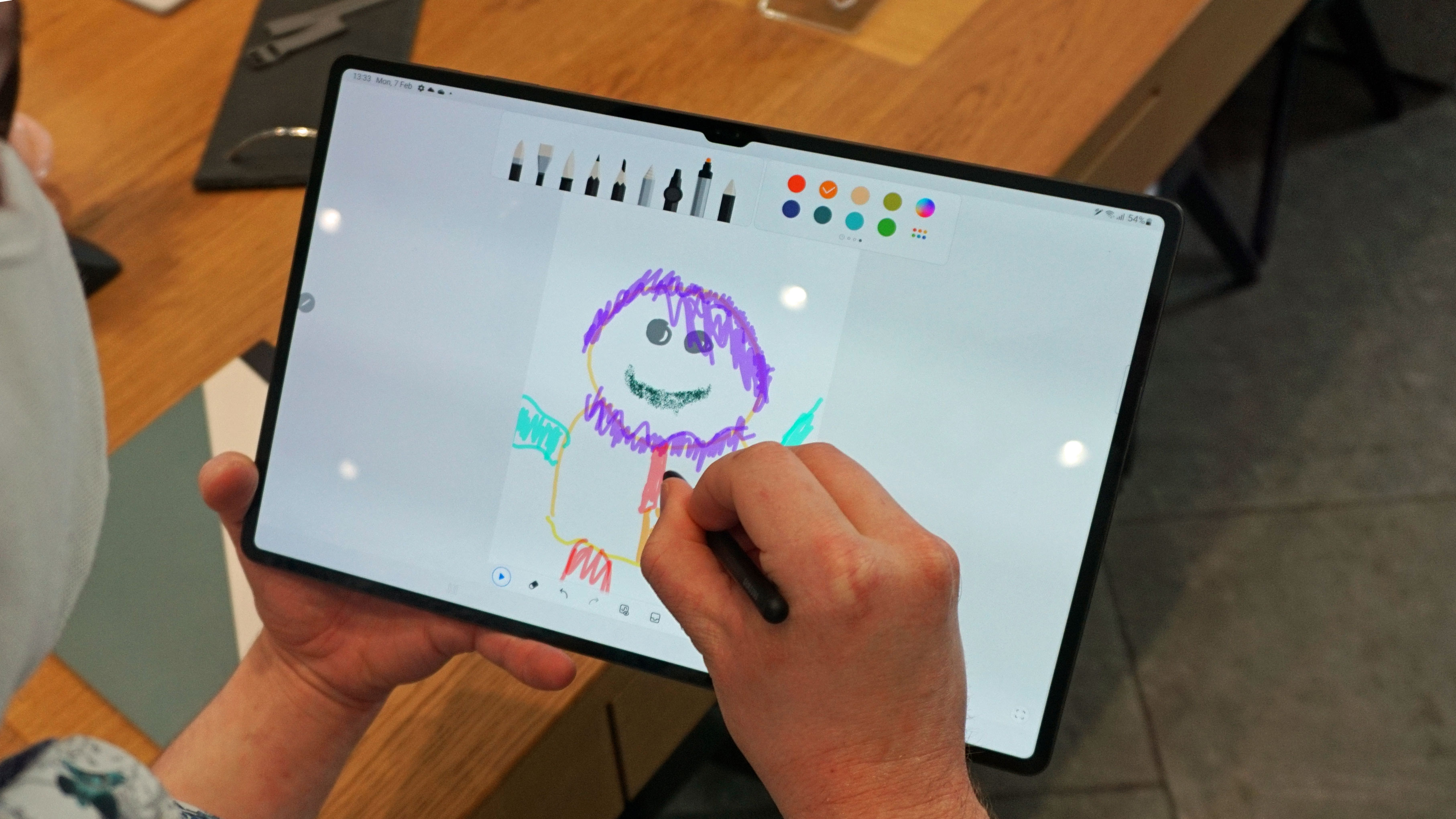Apple's super-sized iPad Pro will be a waste of screen space without one small tweak
It needs a new aspect ratio

Recently, we've heard rumblings of a new iPad Pro (expected release in late 2022) on the horizon, one with a super-sized screen. We might soon have a 14.1-inch version of the super-powerful slate, alongside the standard 11- and 12.9-inch versions we've seen in the past.
That sounds great for entertainment and work, but there's one unavoidable issue with a behemoth like that, and that's that the size exacerbates any unaddressed issues found in the smaller tabs.
Case in point: the aspect ratio of the iPad Pro (2021) suits the uses of the tablet, but if Apple scales that up to 14 inches, they might very well be wasting space with the extra pixels.
Tablet aspect ratio
Most iPad screens have a 4:3 aspect ratio in landscape mode. Generally, an aspect ratio like that means that for every 4 inches of width, there is 3 in height. 1:1, for example, would be square. Compared to other tablets on the market, iPads are relatively squarish, at 4:3.
For context, smartphones hover around 18:9 to 21:9 (height to width); and in the tablet world, many designs, including Samsung's Galaxy Tab S8 and Amazon's Fire HD, stick to an aspect ratio of 16:10. That makes them much wider than iPads when laid landscape.
This kind of aspect ratio can be great for a range of functions: it makes it easier to split-screen the device and see 2 documents side-by-side, without them being weirdly stretched. Maybe more importantly for some, the 16:10 aspect ratio means you don't have the huge bars at the top and bottom when you watch movies, which typically have very wide aspect ratios.
iPad Pro-blem
The iPad Pro is useful for many reasons, but its aspect ratio is a key sticking point. For the reasons we've previously discussed, it's hard to easily multitask on an iPad Pro. Furthermore, when you watch a movie, the actual video only showcases on less than half the screen area – thanks to the aspect ratio and those aforementioned giant black bars.
Sign up for breaking news, reviews, opinion, top tech deals, and more.
A 14-inch iPad would purportedly give you more viewing area, but if Apple sticks with the 4:3 aspect ratio, we'd still have the same issues – just in a slightly different size. You'd still have gigantic black bars above and below your movie, and the actual increase in viewing size would be minimal, at best.

There's one additional problem, and it has to do with cases and stands. When we tested the Samsung Galaxy Tab S8 Ultra with its 14.6-inch screen and even wider 16:10 aspect ratio, we felt like it was always at risk of falling over.
A giant 14.1-inch slate with a 4:3 aspect ratio would be really tall, even when held landscape. As a result, it might need a super-strong Magic Keyboard magnet to hold it, or an incredibly strong Keyboard Folio to ensure it doesn't fall over when reclined because of its own weight and, well, gravity.
Make a wide iPad
The solution for these issues is easy: Apple should make a tablet with a wider aspect ratio.
The company is no stranger to this type of screen ratio: its MacBook Pros have 16:10 displays, and also come in 14-inch sizes. What a coincidence.
This would, of course, require some tweaks to iPadOS to make Apple's tablet software fit – at the moment, we expect that to be an easy job since all iPads have the same ratio. But with Android 13 bringing some serious upgrades to Android tablets, we've got our fingers crossed that Apple's engineers are pulling out all the stops to upgrade iPadOS in a big way.
Apple would also need to adjust the dimensions for its keyboard and case accessories, beyond simply increasing their size.
But Apple can't expect consumers to gobble up a wobbly iPad with loads of wasted screen space, so it would behoove them to put in the extra development time.

Tom Bedford joined TechRadar in early 2019 as a staff writer, and left the team as deputy phones editor in late 2022 to work for entertainment site (and TR sister-site) What To Watch. He continues to contribute on a freelance basis for several sections including phones, audio and fitness.